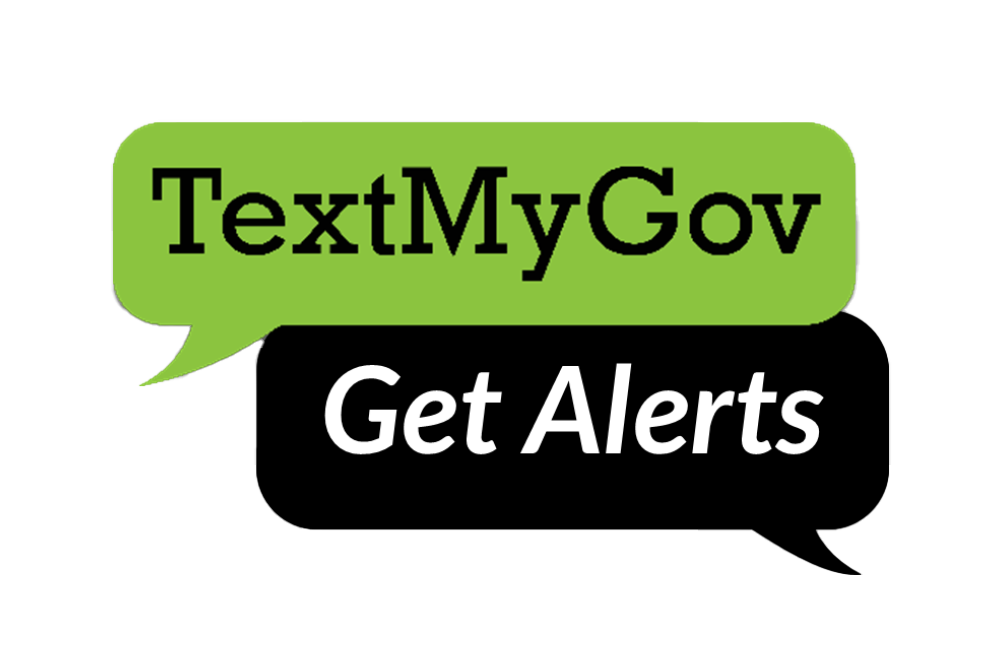Water Department of Clinton


Services:
We are pleased to present this year’s Annual Water Quality Report (Consumer Confidence Report) as required by the Safe Drinking Water Act (SDWA). This report is designed to provide details about where your water comes from, what it contains, and how it compares to standards set by regulatory agencies. This report is a snapshot of last year’s water quality. We are committed to providing you with information because informed customers are our best allies. Last year, we conducted tests for over 80 contaminants. We only detected 13 of those contaminants, and found only 1 at a level higher than the EPA allows. As we informed you at the time, our water temporarily exceeded drinking water standards. (For more information see the section labeled Violations at the end of the report.)
Some people may be more vulnerable to contaminants in drinking water than the general population. Immuno-compromised persons such as persons with cancer undergoing chemotherapy, persons who have undergone organ transplants, people with HIV/AIDS or other immune system disorders, some elderly, and infants can be particularly at risk from infections. These people should seek advice about drinking water from their health care providers. EPA/Centers for Disease Control (CDC) guidelines on appropriate means to lessen the risk of infection by Cryptosporidium and other microbial contaminants are available from the Safe Water Drinking Hotline (800-426-4791).
The City of Clinton water customers are fortunate they enjoy an abundant supply from two excellent sources, the Sparta and Cockfield aquifers. we pump this water from eleven deep wells, seven of which pull from the Sparta and four from the Cockfield aquifers. The City of Clinton has a total of five elevated storage tanks with a combined capacity of 2.9 million gallons of drinking water. The average daily consumption was 3 million gallons, which travels through approximately 170 miles of water mains.
The Mississippi Department of Environmental Quality (MSDEQ) source water assessment report continues to be available for review upon request at the City of Clinton Public Works department. Please contact Robbie Price at (601)924-2239 or by email at rprice@clintonms.org to make an appointment. A current ID will be required for any Clinton water customer who wishes to review the report.
Drinking water, including bottled water, may reasonably be expected to contain at least small amounts of some contaminants. The presence of contaminants does not necessarily indicate that water poses a health risk. More information about contaminants and potential health effects can be obtained by calling the Environmental Protection Agency’s (EPA) Safe Drinking Water Hotline (800-426-4791). The sources of drinking water (both tap water and bottled water) include rivers, lakes, streams, ponds, reservoirs, springs, and wells. As water travels over the surface of the land or through the ground, it dissolves naturally occurring minerals and, in some cases, radioactive material, and can pick up substances resulting from the presence of animals or from human activity: microbial contaminants, such as viruses and bacteria, that may come from sewage treatment plants, septic systems, agricultural livestock operations, and wildlife; inorganic contaminants, such as salts and metals, which can be naturally occurring or result from urban stormwater runoff, industrial, or domestic wastewater discharges, oil and gas production, mining, or farming; pesticides and herbicides, which may come from a variety of sources such as agriculture, urban stormwater runoff, and residential uses; organic Chemical Contaminants, including synthetic and volatile organic chemicals, which are by-products of industrial processes and petroleum production, and can also come from gas stations, urban stormwater runoff, and septic systems; and radioactive contaminants, which can be naturally occurring or be the result of oil and gas production and mining activities. In order to ensure that tap water is safe to drink, EPA prescribes regulations that limit the amount of certain contaminants in water provided by public water systems. Food and Drug Administration (FDA) regulations establish limits for contaminants in bottled water which must provide the same protection for public health.
*****WATER SYSTEM SECURITY*****
The issue of security continues to be of utmost importance to the City of Clinton. Tampering with any part of a water system is a FEDERAL OFFENSE. Please contact the City of Clinton department at (601)924-5252 to report any suspicious activity at any City of Clinton facility.
Your water is treated by disinfection. Disinfection involves the addition of chlorine or other disinfectant to kill dangerous bacteria and microorganisms that may be in the water. Disinfection is considered to be one of the major public health advances of the 20th century.
Did you know that the average U.S. household uses approximately 400 gallons of water per day or 100 gallons per person per day? Luckily, there are many low-cost and no-cost ways to conserve water. Small changes can make a big difference – try one today and soon it will become second nature.
- Take short showers – a 5 minute shower uses 4 to 5 gallons of water compared to up to 50 gallons for a bath.
- Shut off water while brushing your teeth, washing your hair and shaving and save up to 500 gallons a month.
- Use a water-efficient showerhead. They’re inexpensive, easy to install, and can save you up to 750 gallons a month.
- Run your clothes washer and dishwasher only when they are full. You can save up to 1,000 gallons a month.
- Water plants only when necessary.
- Fix leaky toilets and faucets. Faucet washers are inexpensive and take only a few minutes to replace. To check your toilet for a leak, place a few drops of food coloring in the tank and wait. If it seeps into the toilet bowl without flushing, you have a leak. Fixing it or replacing it with a new, more efficient model can save up to 1,000 gallons a month.
- Adjust sprinklers so only your lawn is watered. Apply water only as fast as the soil can absorb it and during the cooler parts of the day to reduce evaporation.
- Teach your kids about water conservation to ensure a future generation that uses water wisely. Make it a family effort to reduce next month’s water bill!
- Visit www.epa.gov/watersense for more information.
The purpose of this survey is to determine whether a cross-connection may exist at your home or business. A cross connection is an unprotected or improper connection to a public water distribution system that may cause contamination or pollution to enter the system. We are responsible for enforcing cross-connection control regulations and insuring that no contaminants can, under any flow conditions, enter the distribution system. If you have any of the devices listed below please contact us so that we can discuss the issue, and if needed, survey your connection and assist you in isolating it if that is necessary.
- Boiler/ Radiant heater (water heaters not included)
- Underground lawn sprinkler system
- Pool or hot tub (whirlpool tubs not included)
- Additional source(s) of water on the property
- Decorative pond
- Watering trough
Protection of drinking water is everyone’s responsibility. You can help protect your community’s drinking water source in several ways:
- Eliminate excess use of lawn and garden fertilizers and pesticides – they contain hazardous chemicals that can reach your drinking water source.
- Pick up after your pets.
- If you have your own septic system, properly maintain your system to reduce leaching to water sources or consider connecting to a public water system.
- Dispose of chemicals properly; take used motor oil to a recycling center.
- Volunteer in your community. Find a watershed or wellhead protection organization in your community and volunteer to help. If there are no active groups, consider starting one. Use EPA’s Adopt Your Watershed to locate groups in your community, or visit the Watershed Information Network’s How to Start a Watershed Team.
- Organize a storm drain stenciling project with your local government or water supplier. Stencil a message next to the street drain reminding people “Dump No Waste – Drains to River” or “Protect Your Water.” Produce and distribute a flyer for households to remind residents that storm drains dump directly into your local water body.
To comply with the “Regulation Governing Fluoridation of Community Water Supplies”, CITY OF CLINTON is required to report certain results pertaining to fluoridation of our water system. The number of months in the previous calendar year in which average fluoride sample results were within optimal range of 0.6 – 1.2 parts per million (ppm) was 3. The percentage of fluoride samples collected in the previous calendar year that was within optimal range of 0.6 – 1.2 ppm was 73%. The number of months samples were collected and analyzed in the previous calendar year was 3.
If present, elevated levels of lead can cause serious health problems, especially for pregnant women and young children. Lead in drinking water is primarily from materials and components associated with service lines and home plumbing. City of Clinton is responsible for providing high quality drinking water, but cannot control the variety of materials used in plumbing components. When your water has been sitting for several hours, you can minimize the potential for lead exposure by flushing your tap for 30 seconds to 2 minutes before using water for drinking or cooking. If you are concerned about lead in your water, you may wish to have your water tested. Information on lead in drinking water, testing methods, and steps you can take to minimize exposure is available from the Safe Drinking Water Hotline or at http://www.epa.gov/safewater/lead.
While your drinking water meets EPA’s standard for arsenic, it does contain low levels of arsenic. EPA’s standard balances the current understanding of arsenic’s possible health effects against the costs of removing arsenic from drinking water. EPA continues to research the health effects of low levels of arsenic which is a mineral known to cause cancer in humans at high concentrations and is linked to other health effects such as skin damage and circulatory problems.
In order to ensure that tap water is safe to drink, EPA prescribes regulations which limit the amount of contaminants in water provided by public water systems. The table below lists all of the drinking water contaminants that we detected during the calendar year of this report. Although many more contaminants were tested, only those substances listed below were found in your water. All sources of drinking water contain some naturally occurring contaminants. At low levels, these substances are generally not harmful in our drinking water. Removing all contaminants would be extremely expensive, and in most cases, would not provide increased protection of public health. A few naturally occurring minerals may actually improve the taste of drinking water and have nutritional value at low levels. Unless otherwise noted, the data presented in this table is from testing done in the calendar year of the report. The EPA or the State requires us to monitor for certain contaminants less than once per year because the concentrations of these contaminants do not vary significantly from year to year, or the system is not considered vulnerable to this type of contamination. As such, some of our data, though representative, may be more than one year old. In this table you will find terms and abbreviations that might not be familiar to you. To help you better understand these terms, we have provided the definitions below the table.
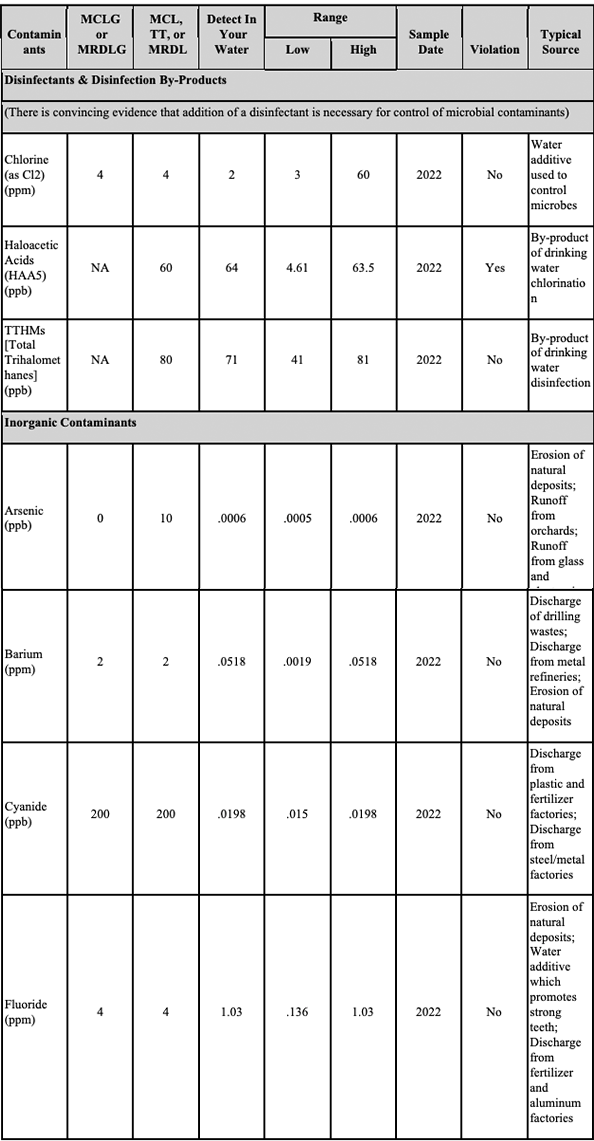


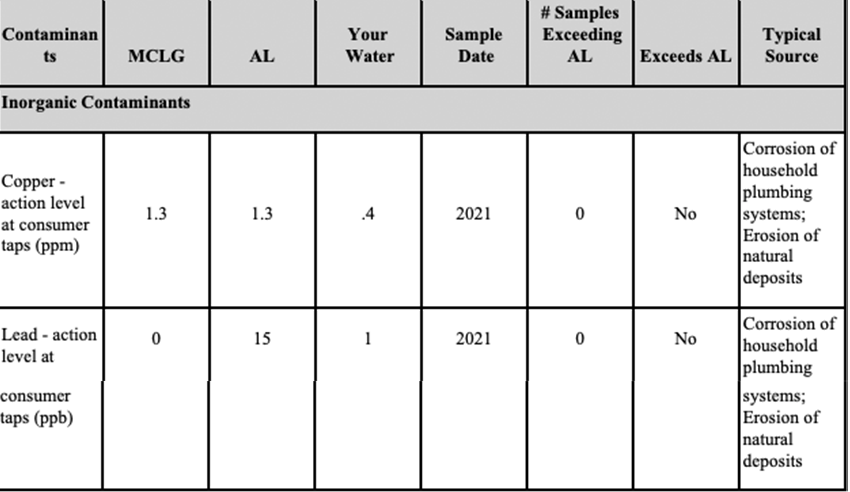





In an effort to insure the safest water possible the State has required us to monitor some contaminants not required by Federal regulations. Of those contaminants only the ones listed below were found in your water.



As part of an on-going evaluation program the EPA has required us to monitor some additional
contaminants/chemicals. Information collected through the monitoring of these contaminants/chemicals will help to ensure that future decisions on drinking water standards are based on sound science.
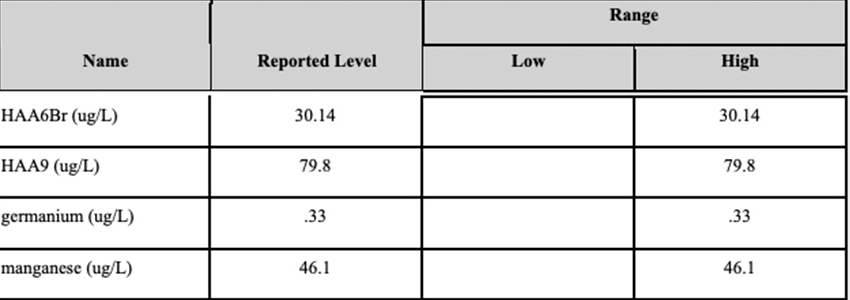


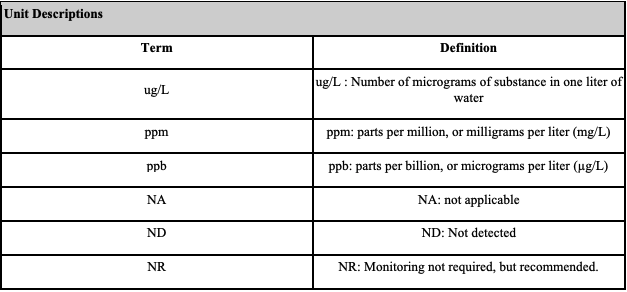


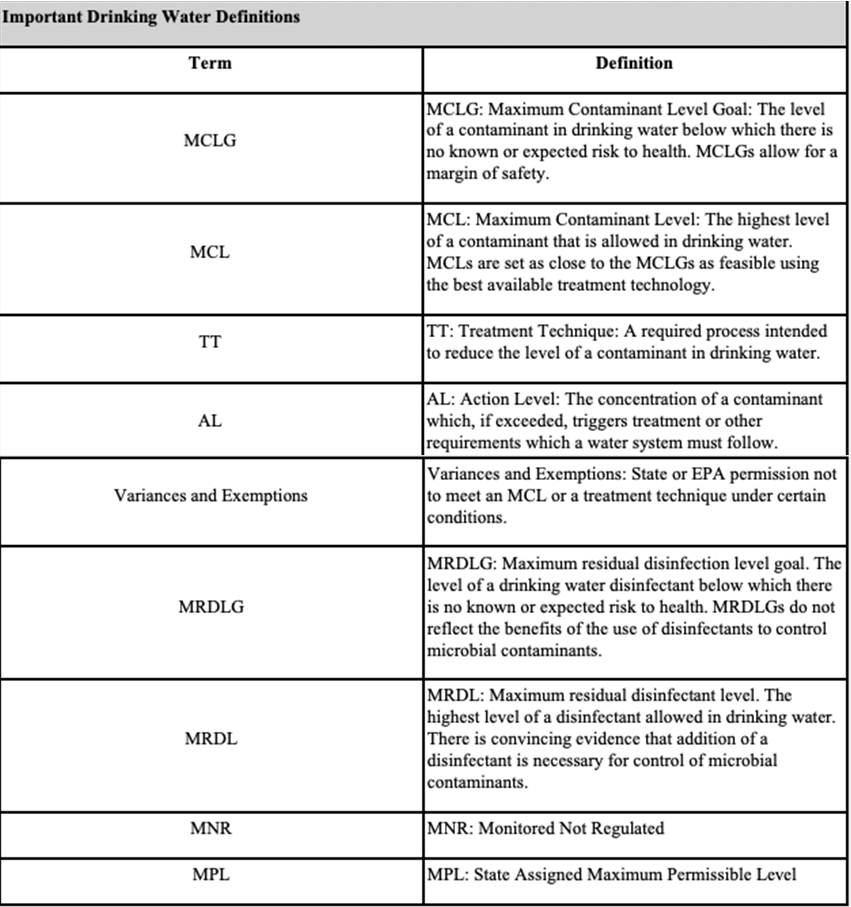


For more information please contact:
Contact Name: Robert Price
Address: 525 Springridge Road
Clinton, MS 39056
Phone: 601-924-2239
We are pleased to present this year’s Annual Water Quality Report (Consumer Confidence Report) as required by the Safe Drinking Water Act (SDWA). This report is designed to provide details about where your water comes from, what it contains, and how it compares to standards set by regulatory agencies. This report is a snapshot of last year’s water quality. We are committed to providing you with information because informed customers are our best allies. Last year, we conducted tests for over 80 contaminants. We only detected 13 of those contaminants, and found only 1 at a level higher than the EPA allows. As we informed you at the time, our water temporarily exceeded drinking water standards. (For more information see the section labeled Violations at the end of the report.)
Some people may be more vulnerable to contaminants in drinking water than the general population. Immuno-compromised persons such as persons with cancer undergoing chemotherapy, persons who have undergone organ transplants, people with HIV/AIDS or other immune system disorders, some elderly, and infants can be particularly at risk from infections. These people should seek advice about drinking water from their health care providers. EPA/Centers for Disease Control (CDC) guidelines on appropriate means to lessen the risk of infection by Cryptosporidium and other microbial contaminants are available from the Safe Water Drinking Hotline (800-426-4791).
The City of Clinton water customers are fortunate they enjoy an abundant supply from two excellent sources, the Sparta and Cockfield aquifers. we pump this water from eleven deep wells, seven of which pull from the Sparta and four from the Cockfield aquifers. The City of Clinton has a total of five elevated storage tanks with a combined capacity of 2.9 million gallons of drinking water. The average daily consumption was 3 million gallons, which travels through approximately 170 miles of water mains.
The Mississippi Department of Environmental Quality (MSDEQ) source water assessment report continues to be available for review upon request at the City of Clinton Public Works department. Please contact Robbie Price at (601)924-2239 or by email at rprice@clintonms.org to make an appointment. A current ID will be required for any Clinton water customer who wishes to review the report.
Drinking water, including bottled water, may reasonably be expected to contain at least small amounts of some contaminants. The presence of contaminants does not necessarily indicate that water poses a health risk. More information about contaminants and potential health effects can be obtained by calling the Environmental Protection Agency’s (EPA) Safe Drinking Water Hotline (800-426-4791). The sources of drinking water (both tap water and bottled water) include rivers, lakes, streams, ponds, reservoirs, springs, and wells. As water travels over the surface of the land or through the ground, it dissolves naturally occurring minerals and, in some cases, radioactive material, and can pick up substances resulting from the presence of animals or from human activity: microbial contaminants, such as viruses and bacteria, that may come from sewage treatment plants, septic systems, agricultural livestock operations, and wildlife; inorganic contaminants, such as salts and metals, which can be naturally occurring or result from urban stormwater runoff, industrial, or domestic wastewater discharges, oil and gas production, mining, or farming; pesticides and herbicides, which may come from a variety of sources such as agriculture, urban stormwater runoff, and residential uses; organic Chemical Contaminants, including synthetic and volatile organic chemicals, which are by-products of industrial processes and petroleum production, and can also come from gas stations, urban stormwater runoff, and septic systems; and radioactive contaminants, which can be naturally occurring or be the result of oil and gas production and mining activities. In order to ensure that tap water is safe to drink, EPA prescribes regulations that limit the amount of certain contaminants in water provided by public water systems. Food and Drug Administration (FDA) regulations establish limits for contaminants in bottled water which must provide the same protection for public health.
*****WATER SYSTEM SECURITY*****
The issue of security continues to be of utmost importance to the City of Clinton. Tampering with any part of a water system is a FEDERAL OFFENSE. Please contact the City of Clinton department at (601)924-5252 to report any suspicious activity at any City of Clinton facility.
Your water is treated by disinfection. Disinfection involves the addition of chlorine or other disinfectant to kill dangerous bacteria and microorganisms that may be in the water. Disinfection is considered to be one of the major public health advances of the 20th century.
Did you know that the average U.S. household uses approximately 400 gallons of water per day or 100 gallons per person per day? Luckily, there are many low-cost and no-cost ways to conserve water. Small changes can make a big difference – try one today and soon it will become second nature.
- Take short showers – a 5 minute shower uses 4 to 5 gallons of water compared to up to 50 gallons for a bath.
- Shut off water while brushing your teeth, washing your hair and shaving and save up to 500 gallons a month.
- Use a water-efficient showerhead. They’re inexpensive, easy to install, and can save you up to 750 gallons a month.
- Run your clothes washer and dishwasher only when they are full. You can save up to 1,000 gallons a month.
- Water plants only when necessary.
- Fix leaky toilets and faucets. Faucet washers are inexpensive and take only a few minutes to replace. To check your toilet for a leak, place a few drops of food coloring in the tank and wait. If it seeps into the toilet bowl without flushing, you have a leak. Fixing it or replacing it with a new, more efficient model can save up to 1,000 gallons a month.
- Adjust sprinklers so only your lawn is watered. Apply water only as fast as the soil can absorb it and during the cooler parts of the day to reduce evaporation.
- Teach your kids about water conservation to ensure a future generation that uses water wisely. Make it a family effort to reduce next month’s water bill!
- Visit www.epa.gov/watersense for more information.
The purpose of this survey is to determine whether a cross-connection may exist at your home or business. A cross connection is an unprotected or improper connection to a public water distribution system that may cause contamination or pollution to enter the system. We are responsible for enforcing cross-connection control regulations and insuring that no contaminants can, under any flow conditions, enter the distribution system. If you have any of the devices listed below please contact us so that we can discuss the issue, and if needed, survey your connection and assist you in isolating it if that is necessary.
- Boiler/ Radiant heater (water heaters not included)
- Underground lawn sprinkler system
- Pool or hot tub (whirlpool tubs not included)
- Additional source(s) of water on the property
- Decorative pond
- Watering trough
Protection of drinking water is everyone’s responsibility. You can help protect your community’s drinking water source in several ways:
- Eliminate excess use of lawn and garden fertilizers and pesticides – they contain hazardous chemicals that can reach your drinking water source.
- Pick up after your pets.
- If you have your own septic system, properly maintain your system to reduce leaching to water sources or consider connecting to a public water system.
- Dispose of chemicals properly; take used motor oil to a recycling center.
- Volunteer in your community. Find a watershed or wellhead protection organization in your community and volunteer to help. If there are no active groups, consider starting one. Use EPA’s Adopt Your Watershed to locate groups in your community, or visit the Watershed Information Network’s How to Start a Watershed Team.
- Organize a storm drain stenciling project with your local government or water supplier. Stencil a message next to the street drain reminding people “Dump No Waste – Drains to River” or “Protect Your Water.” Produce and distribute a flyer for households to remind residents that storm drains dump directly into your local water body.
To comply with the “Regulation Governing Fluoridation of Community Water Supplies”, CITY OF CLINTON is required to report certain results pertaining to fluoridation of our water system. The number of months in the previous calendar year in which average fluoride sample results were within optimal range of 0.6 – 1.2 parts per million (ppm) was 3. The percentage of fluoride samples collected in the previous calendar year that was within optimal range of 0.6 – 1.2 ppm was 73%. The number of months samples were collected and analyzed in the previous calendar year was 3.
If present, elevated levels of lead can cause serious health problems, especially for pregnant women and young children. Lead in drinking water is primarily from materials and components associated with service lines and home plumbing. City of Clinton is responsible for providing high quality drinking water, but cannot control the variety of materials used in plumbing components. When your water has been sitting for several hours, you can minimize the potential for lead exposure by flushing your tap for 30 seconds to 2 minutes before using water for drinking or cooking. If you are concerned about lead in your water, you may wish to have your water tested. Information on lead in drinking water, testing methods, and steps you can take to minimize exposure is available from the Safe Drinking Water Hotline or at http://www.epa.gov/safewater/lead.
While your drinking water meets EPA’s standard for arsenic, it does contain low levels of arsenic. EPA’s standard balances the current understanding of arsenic’s possible health effects against the costs of removing arsenic from drinking water. EPA continues to research the health effects of low levels of arsenic which is a mineral known to cause cancer in humans at high concentrations and is linked to other health effects such as skin damage and circulatory problems.
In order to ensure that tap water is safe to drink, EPA prescribes regulations which limit the amount of contaminants in water provided by public water systems. The table below lists all of the drinking water contaminants that we detected during the calendar year of this report. Although many more contaminants were tested, only those substances listed below were found in your water. All sources of drinking water contain some naturally occurring contaminants. At low levels, these substances are generally not harmful in our drinking water. Removing all contaminants would be extremely expensive, and in most cases, would not provide increased protection of public health. A few naturally occurring minerals may actually improve the taste of drinking water and have nutritional value at low levels. Unless otherwise noted, the data presented in this table is from testing done in the calendar year of the report. The EPA or the State requires us to monitor for certain contaminants less than once per year because the concentrations of these contaminants do not vary significantly from year to year, or the system is not considered vulnerable to this type of contamination. As such, some of our data, though representative, may be more than one year old. In this table you will find terms and abbreviations that might not be familiar to you. To help you better understand these terms, we have provided the definitions below the table.









In an effort to insure the safest water possible the State has required us to monitor some contaminants not required by Federal regulations. Of those contaminants only the ones listed below were found in your water.



As part of an on-going evaluation program the EPA has required us to monitor some additional
contaminants/chemicals. Information collected through the monitoring of these contaminants/chemicals will help to ensure that future decisions on drinking water standards are based on sound science.









For more information please contact:
Contact Name: Robert Price
Address: 525 Springridge Road
Clinton, MS 39056
Phone: 601-924-2239
